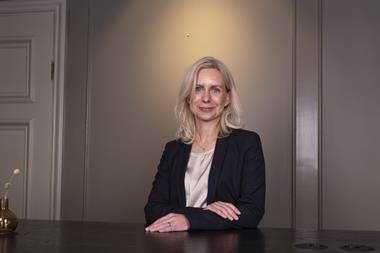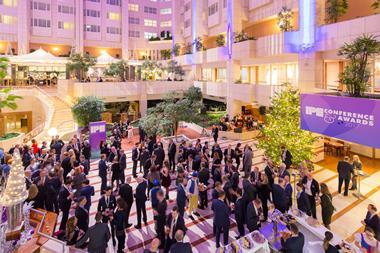An important component in creating long-term competitive returns for life insurance savers is to set up an efficient portfolio construction process. In particular, effective portfolio management can best equip a fund to meet global challenges such as the EU occupational pensions directive and the new traffic light model being used by the regulator.
With this aim in mind, the Länsförsäkringar Liv Försäkrings insurance company has set out over the past year to focus on portfolio construction. The overriding objective was to find a method of working to support the company’s long-term goal: to achieve total returns among the top three of its peer group.
As a result, the project led to changes to the organisational structure of its investment management team.
Länsförsäkringar Liv Försäkrings believes that an appropriate portfolio construction process demands clear responsibility and delegated powers. So its capital management unit was reorganised to achieve this.
Portfolio construction is now divided into the most important sources of risk, mainly market risk (beta) and active risk (alpha) to support the fund’s objectives.
The portfolio manager has responsibility for determining total risk, the level of active risk and the split of active risk between liquid and non-liquid assets.
The existing allocation unit has also been expanded with an alpha and a beta team. The three-person alpha team carries out manager evaluations, produces the active risk budget, and purchases and pays for manager mandates.
The five-person beta team is responsible for the asset-liability modelling (ALM) analysis, market risk and derivative analysis.
The first step in portfolio construction is to identify possible total risk and type of asset. An ALM analysis is carried out to identify an appropriate level of long-term total risk, given the nature of liabilities and the company’s risk preference. Long term is defined as five to 20 years. The company uses its long-term assumptions on returns, risk and covariances for this.
The next step is to determine the market risk and the active risk budget.
First, a model portfolio (complying with any given constraints) is established, based on the required total risk level. The asset allocation of this portfolio is roughly 85% in shares and interest-bearing securities, and 15% in non-liquid assets such as private equity, property and alternative strategies. An analysis is conducted for a one- to five-year term. Market risk is clearly higher for these non-liquid assets.
To determine the benchmark index of the model portfolio, the parameters against which exposure to specific asset classes is designed to protect, and the most suitable index to replicate this exposure, are tested.
Having defined the optimum market risk in the portfolio, the company then determines its desired active risk budget – ie, the proportion of active risk for liquid and non-liquid types of asset, and the level of active risk for each segment.
Market risk and active risk can then be implemented by using either liquid investments or derivatives.
Länsförsäkringar Liv Försäkrings says that for the active risk budget, the risk is allocated within the traditional liquid types of asset, so as to achieve active exposure to the managers which the company respects, and to the markets where it believes it has a good chance of creating surplus profits. Where the active risk budget is distributed between types of asset which are different from those involved in the established market risk, an overlay of terms and other types of derivative is used.
Throughout the entire process, all the above steps are continuously assessed, while a rebalancing policy is also observed. The optimum exposure is adjusted on the basis of changes in parameters such as long-term prognoses, view of risk and manager evaluations.
All these factors are analysed and fed back daily within the allocation unit and the alpha, beta and analysis teams. Formal balancing is carried out weekly and monthly.
According to Länsförsäkringar Liv Försäkrings, the project has been successful in creating an improved environment for meeting global challenges. There has been increased focus on the long-term risks and the optimum model portfolio. Furthermore, greater focus on the active risk budget has significantly improved results from active management.
The changes in portfolio construction have also introduced a new investment strategy and class of asset, together with alternative yielding strategies such as further profit and risk opportunities.
On a personal level, employees have become more committed to their roles as a result of being given clearly-defined tasks. There are individual target contracts with measurable results, both on an individual and unit basis. This helps the analysis of performance, while results are directly linked to salaries.
Länsförsäkringar Liv Försäkrings also says that the focus on the sub-components of the portfolio construction has contributed to its improved competitiveness. In 2004, the company was in fourth place in terms of profits, but has climbed to second place on the results for the first six months of 2005, with profits of 10% so far this year.
Highlights and achievements
One of Sweden’s leading life insurance companies, Länsförsäkringar Liv Försäkrings has become even more competitive as a result of restructuring its portfolio construction process. By reorganising the asset management hierarchy and giving team members clear responsibility and delegated powers, as well as increasing the staffing on its alpha and beta teams, it has improved returns compared with its peer group.
The new portfolio construction process can be broken down into the identification of possible total risk and type of asset; determination of market risk and active risk budget; implementing market risk and active risk; and continuous follow-up and rebalancing.
As a result, the focus on long-term risks and the optimum model portfolio has grown, while the increased focus on the active risk budget has significantly improved results on the active side. Employees have been given clear tasks with measurable results, and this has resulted in a greater commitment to their responsibilities.
All in all, the company is now much better placed to face the challenges brought about by global change.














No comments yet